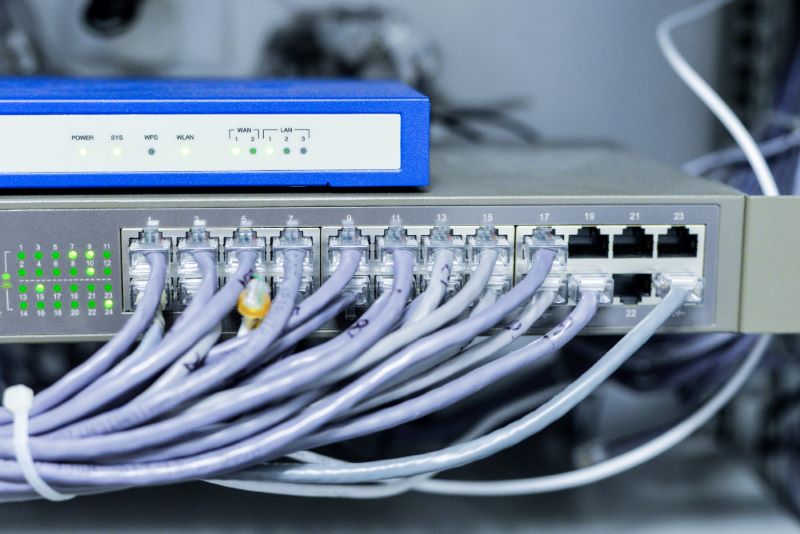Inventory Analytics: Big Data For Inventory Management
How would you feel if you went to your favorite store twice in a row and you were unable to find what you were looking for both times? It might just be a one-time issue, right? What if it happened a third time? Exactly. That feeling you get is what your customers get every time they log in to your online store and cannot find what they need. Consumers (including me and you) have moved to a point where efficiency and satisfaction are valued over loyalty. 31% of consumers will check out another store the first time a product is unavailable on their preferred store. That is a number you can’t afford to lose.
ECommerce is a data-driven infrastructure. You, your competitors, your suppliers, and your customers are constantly generating streams of data that have a visible impact on your business, like how many pairs of shoes you have left in your warehouse. Now, while you cannot predict just how many shoes people will want to buy, you can optimize your inventory to give you the highest probability of having shoes in stock when people need them with the aid of inventory analytics. Inventory analytics is how you use all the vast amounts of data in your inventory management system and all the other datasets we mentioned above to optimize your inventory, stock the right amount of the right products, and improve your product delivery system’s efficiency.
Even better, with the aid of web scraping, you can easily keep an eye on all these data streams and have them at hand for when you need them. In this article, we’ll take a look at how inventory analytics work, how to scrape inventory data, and the ways big data can help you optimize your product inventory for maximum efficiency. Feel free to skip ahead with the table of contents.
Table of Contents
1. What Is Inventory Data Management?
2. Sources of Data for Inventory Analytics
What Is Inventory Data Management?

Inventory management is the supervision of non-capitalized assets (inventory) and stock items. A component of supply chain management, inventory management supervises the flow of goods from manufacturers to warehouses and from these facilities to the sale point.
However, with the way consumers and the eCommerce space, in general, are evolving, inventory management is now about more than merely the process of storing accurate inventory. It is not enough to know just what you have in stock. You need to know what you should have when you should have it, and how much of it you should have. You need to know if you are losing part of your inventory. You need to know if you can improve your method of delivery. Inventory analytics is how you get all this valuable inventory intelligence.
These days, business decisions are mostly data-driven, and inventory intelligence consists of vital information such as sales demand, stock availability, supply-chain efficiency, and product returns. This information can be all the difference between you and losing 31% of your customers every time you don’t have the product they need.
Sources of Data for Inventory Analytics

With the expansion of inventory management scope, the sources of the inventory data needed to implement inventory analytics properly are no longer limited to just the data gathered from your warehouse and suppliers. Here are some other sources of data needed for inventory analytics:
- Competitor data: Your competitors are a goldmine of data waiting for you to mine. From how they describe their products to how their website is structured and their supply channels, your competitors are either telling you what to do or what not to do. You can also scrape your competitor websites for in-demand products that they do not have so you can stock them.
- Past sales data: The past is a map of the future. While not predicting the future, your past sales data can tell you a lot about the possible demands that might show up in the future and how to meet them.
- Consumer trends: Consumer trends are what dictate what people demand at a particular time or season. Data from these trends help tell you what you should stock and what you shouldn’t.
- Supply-chain data: From your suppliers to you or from you to your customers, your supply chain data can tell you about the deficiencies in your supply and the smoothness of your warehouse operations.
How to collect inventory data
You can easily collect, collate and manage the data generated from your warehouse operations (traditional inventory management data) with traditional data collection methods. However, to scrape data from competitors, monitor consumer trends, and collect supply-chain data, you need a data collection solution that can leverage automation to collect these large datasets in a short time. Web scraping can help you do this.
Web scraping uses automated bots to parse through the source code of a given web page and extract data according to some preset parameters. These bots tag the data, and an extractor collects the data into a spreadsheet file.
Web scraping allows you to collect large volumes of data quickly. It also makes it easy to collect related datasets and enter them into a spreadsheet for easy analysis. You can scrape retail data from your competitors’ websites, scrape social media for data on consumer trends and keep track of how goods move from your suppliers to your warehouse to your customers.
Web scraping bots also allow you to collect data in real-time. This is especially useful in a niche like eCommerce. Most of the datasets you need are always changing. Consumer trends can change overnight. Your supply chain can develop a problem overnight. Your competitors are continually updating their websites. Web scraping can help you keep track of all these shifting datasets.
Now let’s look at how to use big data and inventory analytics to improve your inventory management.
How Big Data Can Improve Inventory Management

You can leverage inventory data in multiple ways to improve your customer service and efficiency. Here are some of them:
- Forecast Future Demand
Balancing product availability against demand has always been an issue in the eCommerce niche. Inventory analytics allows you to access a ton of information that can be applied to anticipate a product or service’s demands in the future. The historical inventory sales data and past consumer behavior in particular seasons can tell you what people will ask for in the future and when they will ask for it. Therefore, you can stock up on the right products at the right time and ultimately satisfy your customers. - Competitive Intelligence
Like I said earlier, everything about your competitors is either telling you what to do or what not to do. If your competitors are not stocking a particular product, it might be because that product does not sell well. If they stop using a supplier you both share, it might be time to reassess that supplier. They might have seen something you did not. By simply scraping your competitor’s website, you can access their inventory data, prices, products description, and others. With inventory analytics, you can use all these datasets to produce competitive intelligence that allows you to beat the competition with their own moves. - Promotes Sales & Profit Margins
Seeing as inventory analytics reveals patterns and trends, you can use it to optimize your sales channels and product performances. If a previously slow product starts selling fast, that might be an indication that demand for it is on the rise and you should stock more. If you notice more people buying through a particular channel, you should probably increase your marketing efforts through that channel. Inventory analytics help you use available data to reveal these trends and identify opportunities to make more money. Furthermore, by combining competitive intelligence on pricing with past sales data, you can build an intelligent pricing strategy that sells low without losing money and sells high without losing customers.
- For Security Reasons
In 2019, the US retail industry recorded a $46.8 billion loss, and the average loss per fraudulent employee was $1,203.16. Inventory shrinkage is rampant, and if you aren’t monitoring your business closely, you may lose a lot. Inventory intelligence helps you keep track of the movement of products in and out of your warehouse. If a product goes out that shouldn’t be going out, you can easily identify the who, when, and where of the product, This helps you prevent employee theft which is one of the major reasons for inventory shrinkage. You can also keep an eye on the expiry dates of perishable products, which is a second major reason for shrinkage. - Optimizing Costs: Carrying inventory does not come cheap. The more stock you have, the more you have to pay to keep it. Inventory costs include warehouse fees, labor fees, insurance fees, storage costs, etc. All these costs make it unreasonable to hold a lot of stock unless there is a need for it. Therefore, you have to strike a balance between having minimal inventory and being able to fulfill customer needs. By implementing real-time inventory intelligence into your analytics process, however, you can predict future demands and plan your restocking process to have reorder points that always fit into customer demands. It also allows you to identify safety stock levels and makes sure your stock never falls below them.
Inventory analytics for retailers & consumers
Even if you are a retail or customer, you still need inventory data. By conducting inventory analytics, a whole lot about a business
These are examples of how useful inventory analytics would beneficial to you:
- If there are new contents and what products are new.
- You get to discover the changes the wholesaler has made to the inventory in real-time.
- You could be the first to know when there is a discount or promo.
- It is updated when a product is out of stock or it has been discontinued.
- If they have changed the layout of the website.
Gather Inventory Intelligence With Scraping Robot

At Scraping Robot, we pride ourselves on our cutting-edge scraping technology. Our Scraping service uses API technology and multiple proxies to enable you to collect data both in real-time and from numerous web pages simultaneously. You can get data in as fast as 60 seconds. This means you can keep an eye on all your data sources, monitor consumers and competitors, and track trends all with a single scraping tool. To get started, all you have to do is send us a message detailing what you want, and our developers will get started building your custom scraping solution. With your own custom scraping solution, you can easily collect the data you need to keep track of your inventory, optimize your supply chain and improve your customer service.
Conclusion

With the invasion of big data into every aspect of the online world, it is only fair that retail and online shopping should get their share. Inventory analytics is one of the ways big data is foraying into the online shopping niche, and it has totally revolutionized how you can manage your stock. At Scraping Robot, we offer you the chance to take advantage of inventory analytics for your business with our revolutionary data-scraping solution. Just send us a message and you are good to go.
The information contained within this article, including information posted by official staff, guest-submitted material, message board postings, or other third-party material is presented solely for the purposes of education and furtherance of the knowledge of the reader. All trademarks used in this publication are hereby acknowledged as the property of their respective owners.
